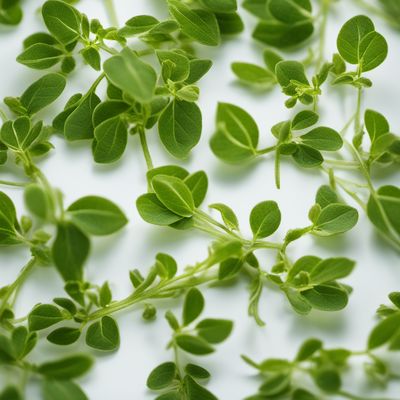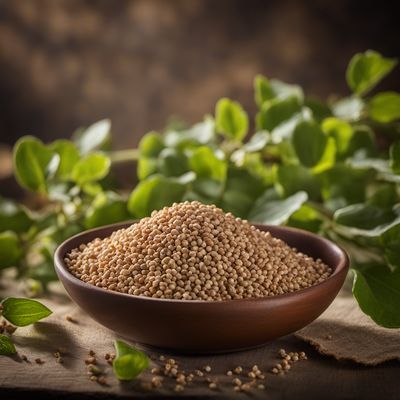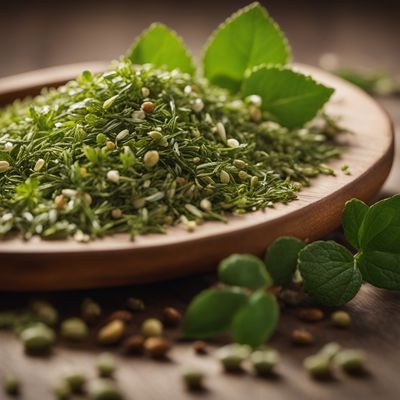
Ingredient
Alfalfa infusion leaves
The Green Powerhouse: Alfalfa Infusion Leaves
Alfalfa infusion leaves are tender, young leaves that have been infused with water to extract their essence. They have a delicate texture and a mild, grassy flavor that adds a refreshing element to dishes. These leaves are packed with essential vitamins, minerals, and antioxidants, making them a nutritious choice for salads, sandwiches, and other culinary creations.
Origins and history
Alfalfa, also known as Medicago sativa, is a flowering plant that belongs to the legume family. It has a long history of cultivation and has been used as a forage crop for livestock for centuries. The use of alfalfa in human diets dates back to ancient civilizations, where it was valued for its medicinal properties. Today, alfalfa infusion leaves are widely consumed for their nutritional benefits and are commonly used in salads, wraps, and smoothies.
Nutritional information
Alfalfa infusion leaves are a nutritional powerhouse, packed with vitamins A, C, and K, as well as minerals like calcium, iron, and magnesium. They are also a good source of dietary fiber and contain beneficial plant compounds such as phytoestrogens and saponins. Incorporating alfalfa infusion leaves into your diet can support overall health and well-being.
Allergens
There are no known allergens associated with alfalfa infusion leaves. However, individuals with a history of legume allergies should exercise caution and consult with a healthcare professional before consuming them.
How to select
When selecting alfalfa infusion leaves, look for fresh, vibrant green leaves that are free from wilting or discoloration. Avoid leaves that appear yellow or brown, as this may indicate spoilage. Additionally, opt for organic or locally grown leaves whenever possible to ensure the highest quality and minimize exposure to pesticides or other chemicals.
Storage recommendations
To maintain the freshness of alfalfa infusion leaves, store them in a perforated plastic bag or airtight container in the refrigerator. This will help retain their crispness and prevent wilting. It is best to consume them within a few days of purchase for optimal flavor and texture.
How to produce
Alfalfa can be grown at home using alfalfa seeds, which are readily available from garden centers or online suppliers. It is a relatively easy plant to grow, requiring well-drained soil, regular watering, and adequate sunlight. With proper care, you can enjoy a fresh supply of alfalfa infusion leaves right from your own garden.
Preparation tips
Alfalfa infusion leaves can be enjoyed raw in salads, sandwiches, or wraps, adding a refreshing crunch and a mild, grassy flavor. They can also be blended into smoothies or juiced for a nutrient-packed beverage. Experiment with incorporating them into your favorite recipes to boost their nutritional value.
Culinary uses
Alfalfa infusion leaves are commonly used in salads, sandwiches, wraps, and smoothies. They add a fresh, vibrant element to dishes and pair well with a variety of ingredients. From a simple alfalfa sprout salad to a nutrient-rich green smoothie, these leaves offer versatility and a nutritional boost to any meal.
Availability
Alfalfa infusion leaves are cultivated in various regions around the world, including North America, Europe, and Asia. They are commonly available in grocery stores, health food stores, and farmers markets. Additionally, they can be grown at home using alfalfa seeds.
More ingredients from this category » Browse all

Goldenrod infusion leaves
Goldenrod Elixir: Unlocking the Healing Power of Nature

Horse-chestnut infusion leaves
The Healing Power of Horse-Chestnut Infusion Leaves

Currant (black, red and white) infusion leaves
Infusion Leaves: A Burst of Flavor and Health

Sweet blackberry infusion leaves
The Berry's Aromatic Brew

Wormwoods infusion leaves
The Bitter Elixir

Knotgrass infusion leaves
The Herbal Elixir: Knotgrass Infusion Leaves

Horehound infusion leaves
The Bitter Herbal Elixir

St. John´s Wort infusion leaves
"Nature's Sunshine: Exploring the Healing Powers of St. John's Wort Infusion Leaves"

Buckwheat infusion leaves
Nutty Elixir

Heather infusion leaves
Heavenly Heather Elixir

Blackberry infusion leaves
The Essence of Blackberry Infusion Leaves

Buchu infusion leaves
The Aromatic Elixir: Unveiling the Secrets of Buchu Infusion Leaves